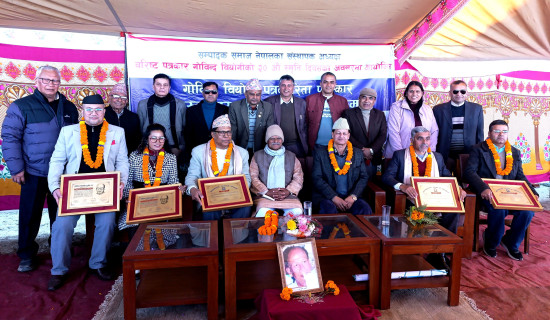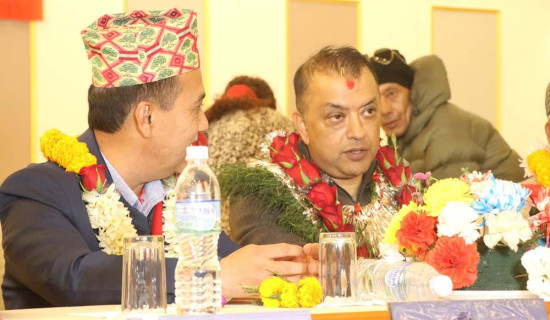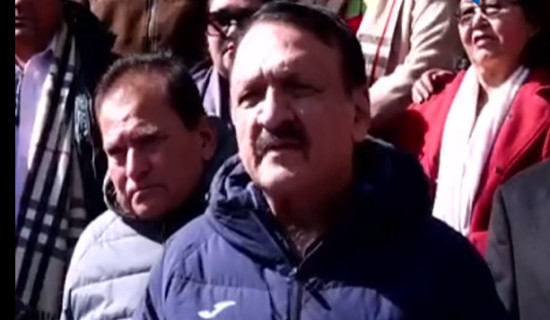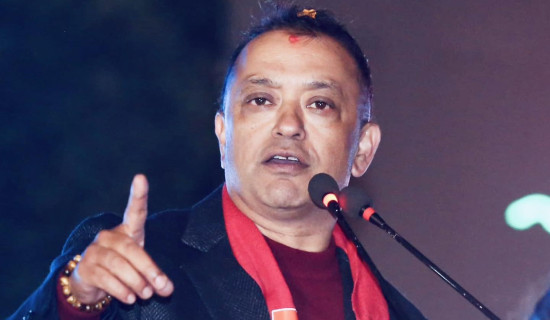- Saturday, 17 January 2026
Solve Problem Of Landless Squatters
Uttam Maharjan
The problem of landless squatters is a chronic issue in the country. Successive governments have tried to solve the problem but they have not been able to come up with a permanent solution. The efforts being put in by the governments to solve the problem of landless squatters and unplanned settlers are patchy.
The problem of landless squatters has arisen, especially since the 1980s. During the 1980s, people from outside the Kathmandu Valley started to migrate to Kathmandu. They occupied temple premises and public buildings. Gradually, informal settlements emerged in Kathmandu. The number of such internal migrants was low in the beginning. By 1985, the number had grown to 2,000. Three years later, the number of landless squatters reached 3,700. The number kept on growing, reaching 8,000 to 10,000 in 1992 and 12,000 in 1997. Out of the 12,000 squatters, 9,000 used to live in informal settlements, and the remaining 3,000 in derelict public buildings.
Migration
The problem got compounded with the start of the Maoist insurgence. Many people displaced by the insurgency flooded Kathmandu for safety reasons and settled in the capital city. Charmed by the glitter of the capital city, they did not go back home even after the end of the Maoist insurgency. If anything, the trend of migration to the capital city is still continuing, leaving the rural areas in desolation.
In 2003, when the Maoist insurgency was raging, the number of landless squatters was put at 20,000 to 40,000 living in 63 settlements. In 2019, there were 29,000 landless squatters living in 73 informal settlements in Kathmandu. The governments have evicted landless squatters from time to time. Sometime after eviction, the landless squatters would settle in the same settlements again. It would be germane to note that the High-Powered Committee for Integrated Development of the Bagmati Civilisation published a notice on November 11, notifying the landless squatters living along the banks of the Bagmati River to remove their sheds within ten days. The notice further said that if they did not remove the sheds, the sheds would be forcibly demolished.
Way back in 1990, K P Bhattarai-led government formed a mechanism to address the problem of landless squatters. The mechanism had hardly started work when it was dissolved by GP Koirala-led government and a new commission led by Shailaja Acharya was formed. The Acharya commission worked in earnest to distribute land to landless squatters. Thereafter, several commissions were formed one after the other. The Rishi Ram Lumsali commission, which was formed during the 9-month rule of the CPN-UML in 1995, distributed 21,900 bighas (14,673 hectares) of land to 58,340 landless families. Likewise, the commission (2001) led by Mohammed Aftab Alam distributed 9,500 bighas (6,365 hectares) of land to over 15,000 landless families. The distribution of land to landless squatters has been continuing till now by forming one commission after the other.
Till now, fourteen commissions have been formed. The commission formed by the Deuba-led government under the leadership of Keshab Niraula is in place now. Before this, the commission led by Devi Prasad Gyawali formed by the Oli-led government was in place. The commission was based on the Land Act, 2064. The commission was formed in March 2020 after reviewing the act in August 2019. The commission had the mandate to distribute land to people residing in one place for a decade or more even if they own land in other parts of the country by charging a certain amount to them.
The commission was also mandated to build multi-storeyed apartments to solve the problem of landless squatters in big cities like Kathmandu. Further, the government amended the Land Rules in December 2020 so that all landless squatters and Dalits could receive titles to land subject to certain conditions. The Niraula-led commission is also based on the Land Act, 2064. The commission has, however, prioritised distribution of land to landless Dalits. On the other hand, the Gyawali-led commission had made detailed studies of landless squatters. The commission received applications from 1,180,761 families in the one-and-half year period, out of which 247,960 were landless squatters and 932,801 were unplanned dwellers.
As per a situation report prepared by the Amnesty International, 26.1 per cent of agricultural households in the country have no land for cultivation. Landlessness is high among Madhesi Dalits (41.4 per cent) and Dalits living in the hills (36.7 per cent). And most of the Dalits holding land are small landholders. It is surmised that 5 per cent of the population controls as much as 37 per cent of the arable land. The Niraula-led commission has announced that urban squatters in the Kathmandu Valley could get up to 130 m2 of land and up to 340 m2 of land elsewhere. They could get up to 2,000 m2 of land in agricultural areas and up to 3,000 m2 of land in mountainous areas.
Permanent solution
Although over 46,000 bighas (30,820 hectares) of land have been distributed to landless squatters over the last three decades, there are still hundreds of thousands of landless squatters in the country. As per the estimate made by the Gyawali-led commission in March 2021, the number of landless squatters in the country is 2.1 million. There are apprehensions that genuine landless squatters are left out in the cold when it comes to land distribution. Those who have access to leaders or who are influential themselves succeed in getting land as landless squatters. Landless squatters are called “sukumbasis” in Nepali, while such false “sukumbasis” are popularly called “hukumbasis”.
No doubt, there are genuine landless squatters in the country. Their rights to be resettled in a dignified manner are also ensured in the constitution and in the Land Rules. While distributing land to landless squatters, it should be ensured that only genuine landless squatters get land. For this, records of genuine landless squatters need to be prepared in close coordination with local governments. Those having land in other parts of the country should not be given land. It should also be ensured that those who have received land as landless squatters are not allowed to sell the land. The woes of landless squatters should not be made a political issue. The government should act in earnest to find a permanent solution, not an expedient one that serves the purpose for the time being only.
(Maharjan has been regularly writing on contemporary issues for this daily since 2000. uttam.maharjan1964@gmail.com)
















-original-thumb.jpg)